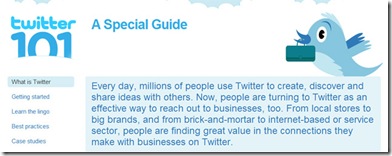Telecommuting in the 21st Century: How to Implement or Improve Virtual Teams and Flexible Work in Your Organization (Part 2: What Jobs are right for Telework or Remote Work?)
August 10, 2009 by Phil Montero · 2 Comments
Welcome to Part 2 of our 13 part audio series on Flexible Work and Telecommuting – Telecommuting in the 21st Century: How to Implement or Improve Virtual Teams and Flexible Work in Your Organization“.
So if you are launching a telework program should everyone be able to work outside the office? Think about your job and office. If you’re like many people your work increasingly deals more with information and ideas. Although you interact with others, much of the time it is over the phone or through memos and e-mails. You probably use a desktop computer for access to information, generating reports and documents, and communicating with others. As a general guideline, all jobs that do not involve physical production, expensive specialized equipment, or extensive face-to-face customer contact can be teleworking positions. Even if your job involves a considerable amount of face-to-face meetings, you can plan your office visits around those meetings and still enjoy the benefits of a more flexible work schedule. With proper planning you’ll find that almost every job can be made more “portable” so that much of it can be done from outside the office.
Obviously not every person or job is a good fit for telecommuting. Two main things need to be considered when finding appropriate teleworkers:
- How to select the right jobs: Are the tasks of the person’s job appropriate for telecommuting? How much of their job is, or can be, location independent.
- How to select the right people. This is true for both managers and teleworkers. Like almost everything there are certain types of people that tend to make better remote workers than others.
In part 2 of our podcast, our panel discusses how to identify the job types that are suiteable for telework or remote work byexamining a number of different factors.
So listen in to Part 2: What Jobs are right for Telework or Remote Work?
Podcast: Play in new window | Download (Duration: 5:39 — 5.2MB)
.
Telecommuting in the 21st Century: How to Implement or Improve Virtual Teams and Flexible Work in Your Organization (Part 1: Intro/Why Telework?)
August 3, 2009 by Phil Montero · 11 Comments
I was happy to hear that Virginia Governor Timothy Kaine declared today (Monday, August 3rd) as Telework Day for the State of Virginia. Although this started as a statewide effort to “green” Virginia and reduce energy consumption and efficiency – many are adopting this as a national initiative and encouraging organizations and individuals to telework from home or a remote location.
We thought this was a perfect opportunity for us to launch our 13 part audio series on Flexible Work and Telecommuting – “Telecommuting in the 21st Century: How to Implement or Improve Virtual Teams and Flexible Work in Your Organization“. It’s no surprise that given the hassles of air travel, rising fuel prices, and today’s economy that telecommuting is becoming even more attractive as a win/win situation for many organizations. While in no way a new practice – many companies are looking for tips and best practices for how to implement or improve telecommuting in their organization. So we are here to help!
Starting today and for the next 13 weeks we will be providing a series of audio posts from a recent teleseminar featuring a panel of experts answering some of the most pressing questions regarding implementing or improving a telework program.
The 13 weeks will cover the following topics:
- Part 1: Why Telework? A look at the reasons a company should consider offering telecommuting as an option and an overview of some of the benefits
- Part 2: What Jobs are right for Telework or Remote Work? Identify job types that are suitable for remote work.
- Part 3: What to Look for in a Telework Candidate? How to evaluate candidates for telecommuting consideration based on a number of factors.
- Part 4: What Makes a Good Telework Manager? A look at what qualities and best practices are needed for managing remote employees. Read more
Podcast: Play in new window | Download (Duration: 9:16 — 8.5MB)
Choosing the Right Technology for Your Virtual Team or Virtual Office [VIDEO]
July 28, 2009 by Phil Montero · 20 Comments
A question I’m asked by many entrepreneurs, small business owners, and virtual team managers is . . . “With all the technology available how do I know which tools are best for my virtual team or virtual office?” This is a common challenge and choosing the wrong tools (or too many tools) is a common pitfall of virtual teamwork. It’s important to decide on a core set of tools to support remote collaboration and make sure everyone on your team knows how to use them.
But how do you choose? I have devised a workflow analysis we call the ICC Approach as it looks at your needs in 3 key areas – Information, Communication, and Collaboration. In this short video I walk you through this analysis and help provide questions to guide your thinking when evaluating mobile work technology.
Give it a view and share your comments below to let me know your thoughts and experiences!
Podcast: Play in new window | Download (18.9MB)
How to use Twitter for Business (The Official Twitter Guide)
July 27, 2009 by Phil Montero · Leave a Comment
 Have you been hearing about Twitter just about everywhere you go? The microblogging service has been getting a lot of press lately and as an entrepreneur or small business owner you might be asking yourself – “What is this social networking service all about and how can I use it to connect with others and increase my business?”
Have you been hearing about Twitter just about everywhere you go? The microblogging service has been getting a lot of press lately and as an entrepreneur or small business owner you might be asking yourself – “What is this social networking service all about and how can I use it to connect with others and increase my business?”
I jumped on the Twitter bandwagon a few months back and I am loving it. I find it a great way to find and connect with like minded individuals. I’ve me some great entrepreneurs and others that are passionate about working from anywhere – digital nomads and others interested in workshifting and being location independent.
To be honest, when I first heard about Twitter I thought “What a waste of time . . . why do I want to know that someone has just taken the trash out or just had a delicious ice cream sundae?” But after some time I saw the light and started to understand how Twitter can be used for business networking and as a way to meet some wonderful people.
Twitter must have realized many people were asking the same questions I was because they just launched their Twitter 101 Guide for Business – which is a great overview of the business uses for Twitter. It covers topics such as:
- What does Twitter do for businesses and how does it work
- Learning the lingo
- Best practices
- Case Studies
- Links to other resources
If you are an entrepreneur, small business owner, solo professional or freelancer – you need to know about Twitter! If you have been wondering what all the Twitter buzz is about and how you might use this service to grow your business I suggest you check out the Twitter for Business guide as well as these resources:
- Tweeting for Companies 101
- 50 Ideas on Using Twitter for Business
- 10 Useful Twitter Presentations
- Tweeting for Your Business
- The Ultimate Video Guide to Twitter for Business
- Twitter Jumpstart Guide for Non-Profits
As you start to follow more people you will probably find that you need more than the Twitter website to keep up with the Twitter stream and manage your followers and friends. I recommend two programs to do this – Tweetdeck or my favorite Seesmic Desktop.
If you join the Twitter community, and I hope you will, please follow me @philmontero and say hello. I’d love to connect with you and find ways we can help each other grow our businesses and share common interests!
Conference Board Report: Meeting the Challenge of a Dispersed Workforce
July 20, 2009 by Jason Montero · Leave a Comment
Here is a news item that Rachel Hastings at WFC Resources was righteous enough to bring to our attention. WFC carried this story in their Manager’s Quarterly Newsletter and I felt it was significant enough to pass along here as well. Check out where they list five practices found to be shared among effective distance teams and notice that only one of them relates specifically to technology… something to ponder. ~ J
Survey Offers Ideas for Managing Teleworkers
A new report from the Conference Board finds 80% of employers in agreement: the payoff for enabling employees to work at a distance is such that it’s worth the extra cost.
The purpose of the report, Meeting The Challenge of a Dispersed Workforce, was to identify effective ways to manage distance employees. The researchers studied high-performing, dispersed work teams, and found several differences in perception between managers and distance workers. More than half of managers (53%) said they spend more than an hour a week developing working relationships with their teleworkers; only 18% of those workers believe their manager spent that much time with them. And while 90% of managers felt the phone was the most effective communication tool, 70% of employees felt in-person meetings were most valuable. Those meetings were on the list of five practices found to be shared among effective distance teams: others were clear agreements on accessibility, good use of group software, adequate company support and clearly defined roles for members.


